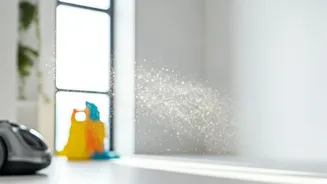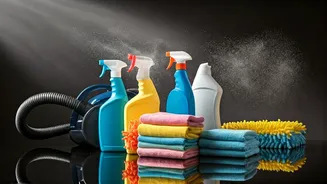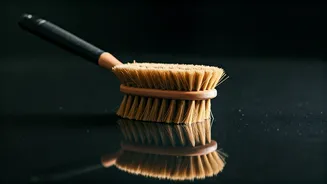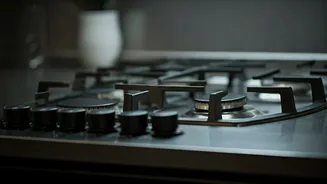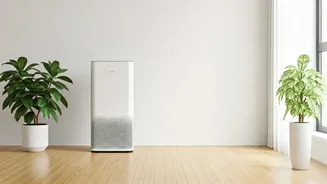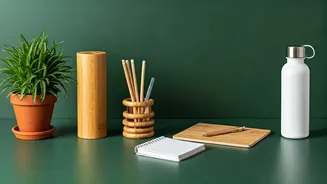Declutter First!
Before you even think about dusting, decluttering is the initial step towards a cleaner home. Less stuff generally means less dust. Go through your belongings
and decide what you truly need, removing anything that has become excess. This initial clearing out makes subsequent cleaning tasks much easier. By removing clutter, you expose less surface area for dust to settle and accumulate. This straightforward approach not only tidies your home but also reduces the effort required for regular cleaning and maintenance.
Microfiber over Cloths
When it comes to dusting, the choice of cleaning tools can make a significant difference. Opting for microfiber cloths over regular cloths is a simple, yet effective change that can significantly enhance your cleaning outcomes. Microfiber cloths have microscopic fibers that effectively capture dust particles, unlike traditional cloths that might merely move dust around. They’re capable of grabbing and holding onto dust, reducing the chances of it simply resettling. This ensures a deeper, more thorough cleaning experience.
Mind the Airflow
Air purifiers should be set up in spaces where you spend a lot of time, like bedrooms and living rooms, to help keep the air clean. Ensure that air purifier is working, since a well-functioning air purifier can significantly reduce the amount of dust floating around in your home. Regularly check and clean or replace the filters. Additionally, focus on keeping your air conditioner vents and fans clear of dust. These appliances can collect and redistribute dust, which means that keeping them clean is critical for a healthy indoor environment. Regular maintenance helps in efficiently managing the air quality in your home.
Hidden Spot Dusting
Dust often accumulates in places that are easy to overlook, but these hidden spots are major contributors to a dusty environment. Don't overlook areas like the tops of doors, behind furniture, and the spaces between appliances. Paying attention to these often-missed areas can make a big difference in the overall cleanliness of your home. Regularly cleaning these spots means a reduction in dust accumulation and a generally fresher feel to your living spaces. A thorough clean requires attention to all areas, and this includes the easy-to-forget locations.
Use Natural Sprays
Using natural anti-dust sprays is an eco-friendly and effective method for controlling dust. Many commercially available dust sprays include harsh chemicals, however you can make your own or buy natural alternatives to avoid these. Homemade solutions frequently use ingredients like essential oils, which also introduce pleasant smells into your home. These sprays can help in attracting and holding dust particles, which prevents them from settling on surfaces. It’s a practical step towards a healthier living environment, reducing the need for potentially harmful chemicals and encouraging cleaner air.
Closed Storage Spaces
Choosing closed storage spaces is a smart approach to managing dust. In open shelving, items gather dust more quickly, requiring more frequent cleaning. By using drawers, cabinets, and containers, you’re reducing the surface area exposed to dust. This approach is particularly beneficial for infrequently used items. The use of closed storage reduces the need for frequent cleaning and helps in keeping your home tidier with less effort. Considering your storage solutions is a key aspect of reducing dust accumulation.
Vacuuming the Right Way
Proper vacuuming can effectively remove dust and allergens. The goal is to vacuum thoroughly, and not just do it frequently. Moving slowly over surfaces allows the vacuum cleaner to catch all the dust and dirt particles. Start with high-traffic areas and then proceed to less-used areas. Regular, thorough vacuuming of carpets, rugs, and upholstery can significantly reduce dust levels. Additionally, make sure to utilize the attachments for hard-to-reach areas, to guarantee that the whole house gets a thorough cleaning.
Wash Curtains, Cushions
Curtains and cushions are often overlooked, but these fabrics tend to collect and hold dust, which can worsen allergy symptoms and compromise indoor air quality. To keep your home dust-free, wash these items regularly. Washing them removes the trapped dust and allergens. Following manufacturer instructions for washing is important to maintain the quality and appearance of these fabrics. Regularly cleaning fabrics reduces dust accumulation, promotes a fresher indoor atmosphere, and helps keep your home dust-free.
Regular Fabric Washing
In addition to washing curtains and cushions, all soft fabrics in your home require routine washing to control dust. This includes bedding, throws, and any other textiles. Regular washing removes dust and allergens that accumulate over time. Following the care instructions for each item will protect the integrity of the materials. This habit improves air quality and helps to keep your home fresh. Consistent fabric cleaning is a great way to deal with dust and keep a healthy living space.
Don't Forget Shoes
Shoes bring a significant amount of dirt and dust into your home from the outside. Making it a habit to remove shoes at the door minimizes the dust and dirt that enters. This step can dramatically reduce the amount of dust in your home, by preventing it from ever making its way inside. By implementing this straightforward action, you reduce the amount of dust and allergens spread throughout your house, simplifying cleaning efforts and promoting a cleaner indoor environment.
